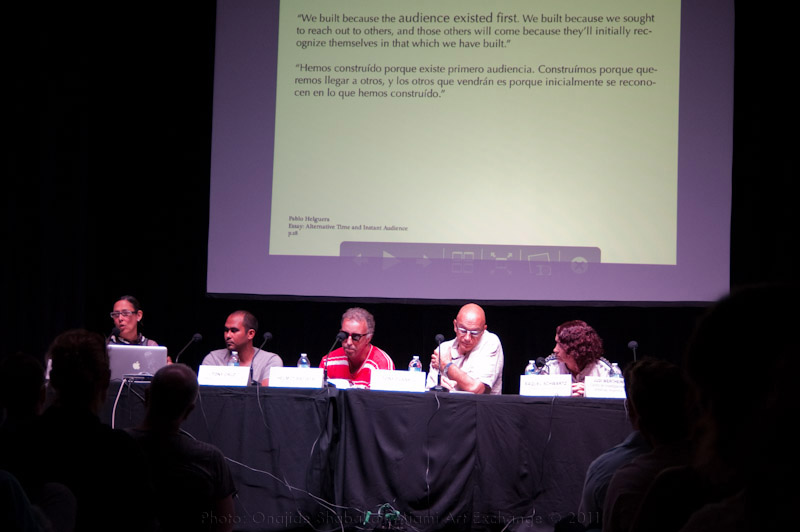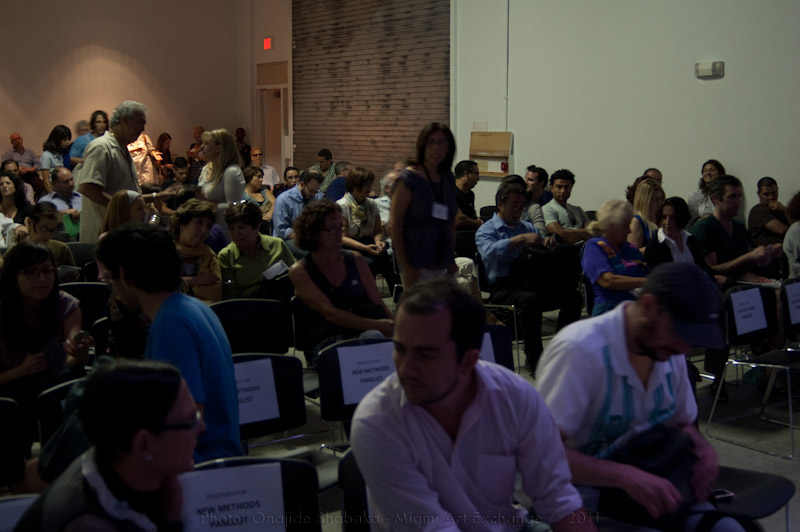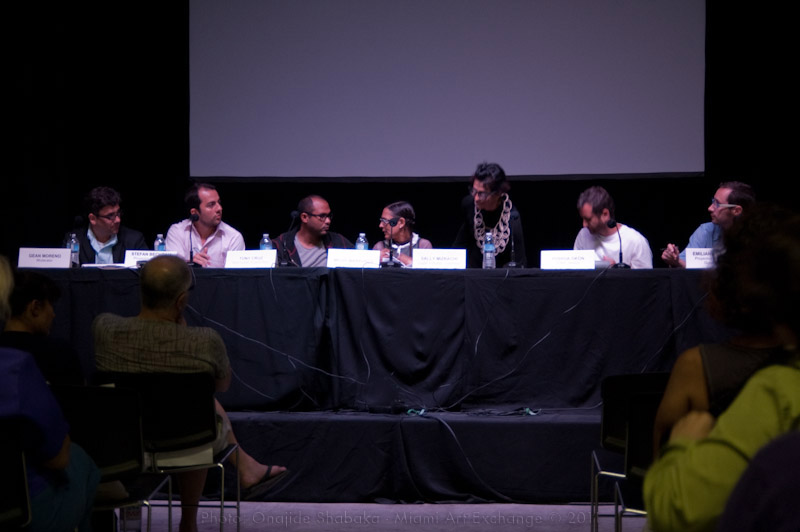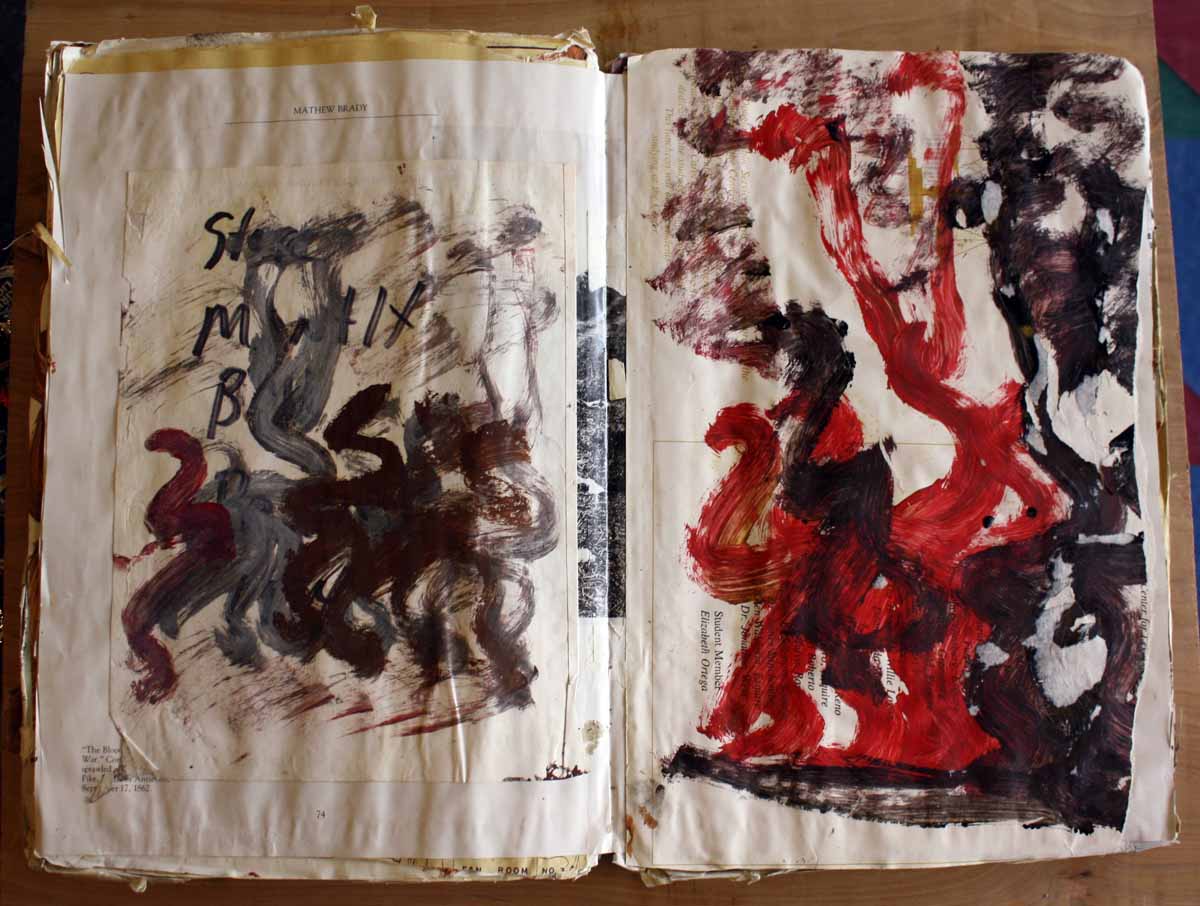NEW METHODS
NUEVOS METODOS
NOVOS METODOS
SYMPOSIUM
May 4, 5, & 6, 2001 – LIVE:
Organizations that participated in the symposium include:
– Centro de Investigaciones Artisticas, Buenos Aires, Argentina
– Lugar A Dudas, Cali, Colombia
– Proyectos Ultravioleta, Guatemala City, Guatemala
– Casa Tres Patios, Medellin, Colombia
– Capacete, Rio De Janeiro, Brazil
– Kiosko Galeria, Santa Cruz Bolivia
– Beta-Local, San Juan, Puerto Rico
Speakers will include: Eduardo Abaroa, Helmut Batista, Pablo Helguera, Roberto Jacoby, Michy Marxuach, Yoshua Okon, Judi Werthein, and others.
Live Notes:
The various organizations use a technique of social sculpture to reach their ends, with a purpose of social discourse.
A valid approach to education is as personal advancement, not the notion of filling an empty vessel as is the predominant model in academia at the present.
What is the “Latin America” that we are talking about here? It’s certainly not a monolithic idea.
Does much of the creative practice engaged in point to an “expanded field,” and what is such a thing anyway?
Arts organizations talking about bringing various locations (in various countries) together, in a rhizomic network form. Maybe we can think of nodes as well.
Most of the participants are exhibition spaces, and residency programs, but much more than that because they also engage in some pedagogical notions.
What are current organizational structures?
Exhibition space, residency, exchanges, ongoing dialogue
Residency program with hotel room space.
Garages, living rooms, beer parties.
Moving from a group to a formal non-profit.
What are the pedagogical programs/ structures?
Artists teaching artists.
Academic art school model is not applicable to many of the participant organizations.
Archive building.
Art cannot be taught. (SOMA is a school that is open and available to everyone. They want to provide a place where people can come together and interact.)
Open calls to artists from various disciplines, such as dance, and writers, participating for one year, juried by local and international panel.
These organizations are operating with the notion of the new academy, taking different approaches to the art practice.
You cannot have a recipe to make art and be an artist.
How are results measured? What are results?
Results can be structurally developed, not a content based thing.
Measurable results may not be what is being sort after, especially when looking at critical thinking.
What about class issues with the art practices of the various organizations?
SOMA tries to be open to many people and art practices, such as weaving, are open to participate. Their interest is in how things are contexualized, not in the materials of production.
All other orgs are operating in a similar manner, being accessible as possible.
The three-day symposium, which is open to the public, will be the first opportunity for leaders from the participating organizations to meet together in the United States and publicly present their practices.
On May 6 at 6:30 pm, Dr. George Yudice, Professor in the Department of Modern Languages and Literatures at the University of Miami will present MOCA’s Dr. Sanford and Dolores Ziff Lecture. Dr. Yudice is one of the foremost Latin Americanists whose research interests include cultural policy, globalization, transnational processes, and the role of intellectuals, artists, and activists in national and transnational institutions.
Presenting organizations meet criteria that include: a focus on community building in their region; promotion of education of practicing artists through the organization of lectures and facilitation of discussions about contemporary art; investment in exchange by bringing international figures to their organizations through hosting guest artists and lectures or through artist residency programs; and non-profit status or the adherence to non-profit ideals.







